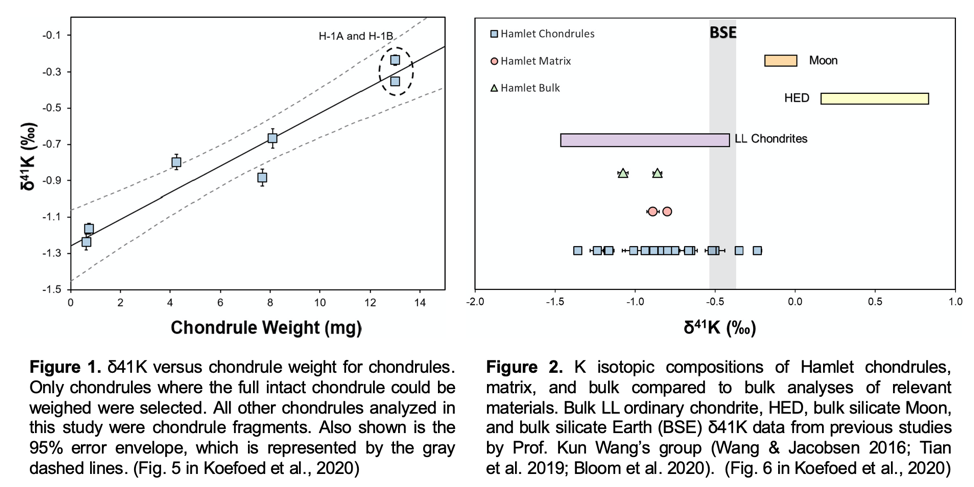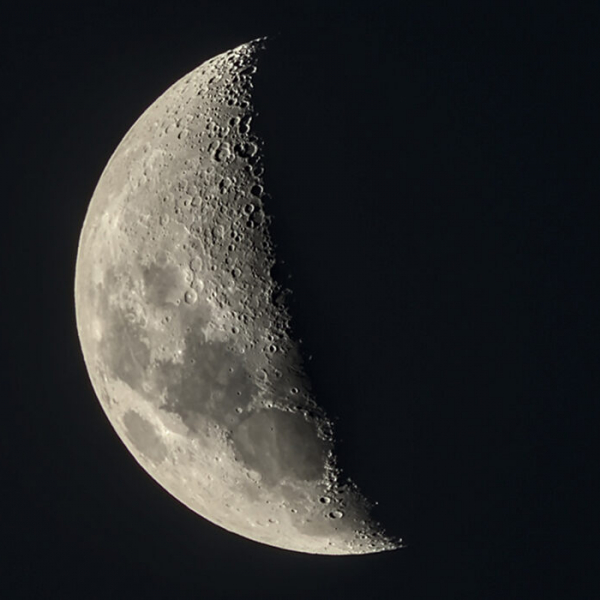Piers Koefoed is a postdoctoral researcher working in Professor Kun Wang's Isotope Cosmochemistry Laboratory.
Prior to arriving at Washington University in St. Louis, I was a PhD student in Australia working on U-Pb analysis to determine the ages of meteorites. Once I completed the PhD, an opportunity arose to come to Washington University as a postdoctoral scholar with the Department of Earth and Planetary Sciences and the McDonnell Center for Space Sciences, working in the emerging field of potassium isotope systematics of extraterrestrial materials. Potassium possesses a unique set of characteristics that give it the potential to record the heating and cooling events that occurred in the early solar system, so I jumped at the chance and moved to St. Louis. Ever since arriving I have enjoyed working amongst some of the best researchers in the field and being at the forefront of understanding how our Solar System formed.
Until very recently the isotopic analysis of K had proven challenging. However, we have developed a method to study K isotopes with high precision using Multi-Collector Inductively Coupled Mass Spectrometry (MC-ICP-MS). Since arriving at Washington University, I have been further refining these specialized K-isotope analysis techniques. By studying the K isotopes in chondritic meteorites, we are advancing our understanding of how these materials, which represent some of the earliest solids in our Solar System and which make up the bulk of the rocky planets today, formed over four and a half billion years ago.
Chondrules, thought to be condensates from the early solar nebula, represent some of the most primitive materials in the Solar System. Even after half a century of intense study, the formation of chondrules is an important topic in cosmochemistry and planetary science. In a paper just published in August 2020, we applied the newly developed techniques to study the high-precision K isotope compositions of individual chondrules to better understand the process by which they formed. Potassium is a moderately volatile element, and as such, its isotopes are ideally suited for recording many early solar system processes. In this study, we painstakingly extracted individual chondrules from the “LL4 Chondrite,” Hamlet, weighed them, and analyzed them along with the meteorite matrix and bulk material to determine their K isotope ratios. An “LL4 chondrite” is a type of the so-called ordinary chondrites, among the most common found on Earth. Chondrites are important because they are among the most primitive solar system materials available for study, and chondrules, the signature component of chondritic meteorites, are a major focus of investigation because they may constitute the bulk of the mass accreted by planetary embryos in the early-formed inner solar system.
As with many issues at the forefront of science, the results surprised us. We found evidence for secondary alteration effects on the meteorite’s parent body and suggested that the meteorite’s K fractionation and distribution were controlled by these processes. A strong correlation between the K isotopic ratio and chondrule mass (see Figure 1 below) suggests that chondrule size played a significant role in the K isotopic distribution within Hamlet. This trend may result from inherited initial differences in the chondrule K isotopic ratios, which were not completely overprinted, or perhaps the mechanisms involved in the metamorphic processes created variations. This K isotope correlation with chondrule mass could also reflect chondrule-forming nebular processes. Similarities between Hamlet and bulk ordinary chondrites (see Figure 2 below) suggest that all LL chondrites, if not all ordinary chondrites, may have formed via the same processes. We concluded that analyses of more pristine chondrules from chondrites of lower metamorphic grade are needed to further evaluate nebular processes of chondrule formation. Like many good cosmochemical problems, more samples and more data, especially of the very high precision of this study, are needed to address this fascinating issue!
Figures 1 & 2: from figures 5 and 6 in the paper:
Koefoed, P., O. Pravdivtseva, H. Chen, C. Gerritzen, M. M. Thiemens, K. Wang (2020) Potassium isotope systematics of the LL4 chondrite Hamlet: Implications for chondrule formation and alteration. Meteorit. Planet. Sci. 55. https://doi.org/10.1111/maps.13545





